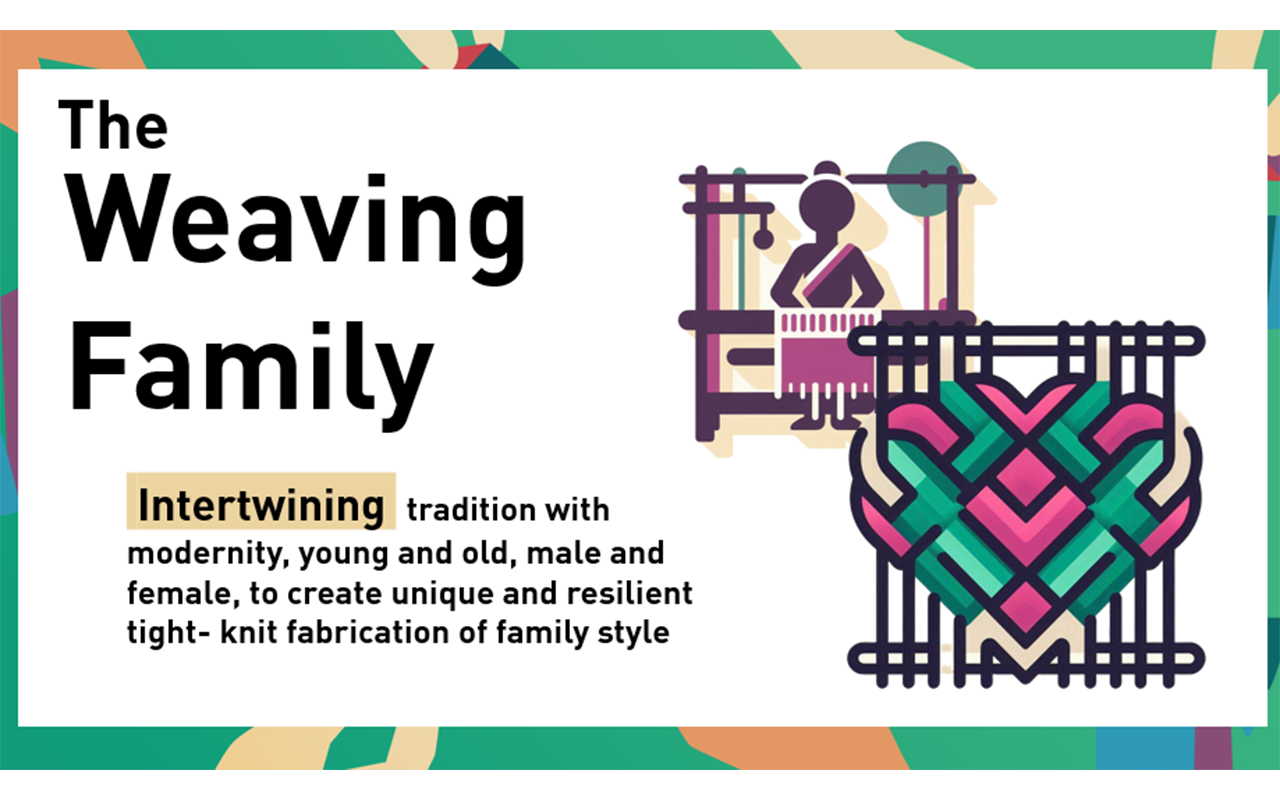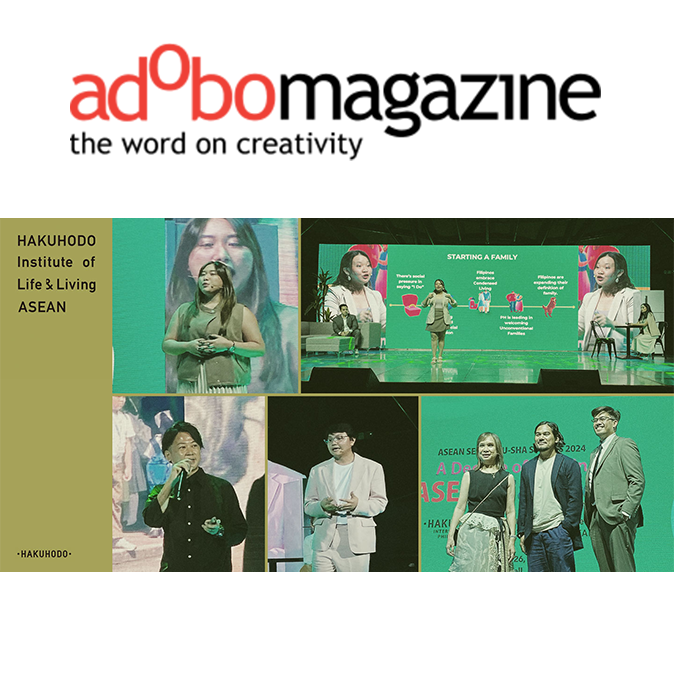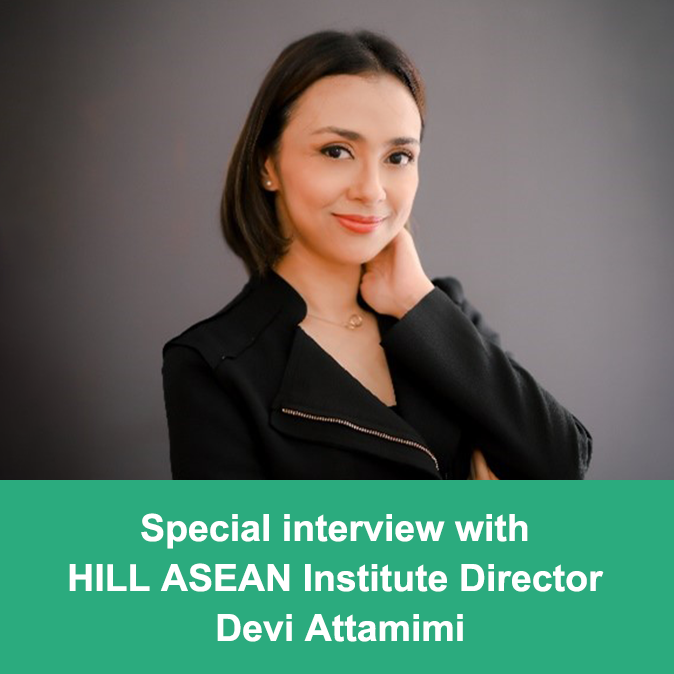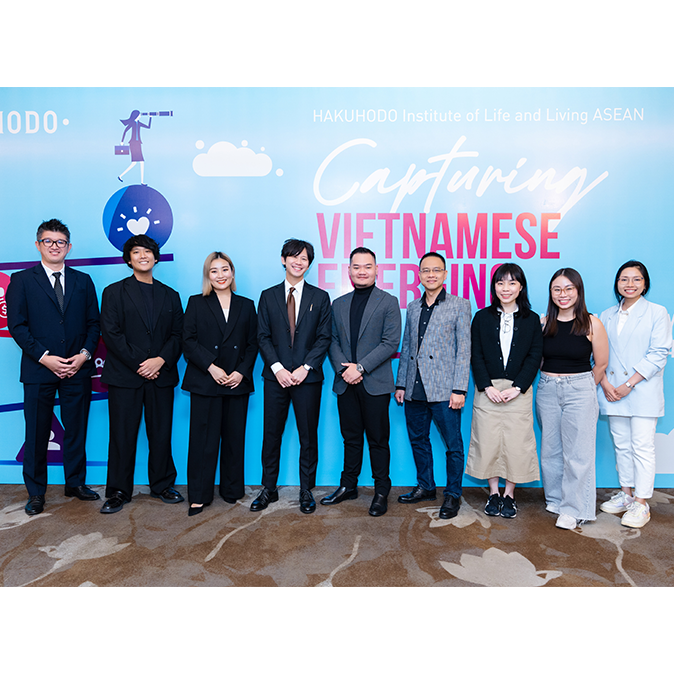- Events
- Research
- HILL

Hakuhodo Institute of Life and Living ASEAN (HILL ASEAN) recently hosted ASEAN Sei-katsu-sha Forum 2024 in Jakarta. To mark the 10th anniversary of the HILL ASEAN, team members from the think tank presented their research on the attitudes and behaviors of ASEAN sei-katsu-sha*—Hakuhodo’s term for the holistic person—through the lens of the family, revisiting the topic of their first study a decade ago.
Established in Bangkok, Thailand in 2014, HILL ASEAN’s initial research offered a deep dive into ASEAN families, highlighting the growing trend of real-time communication through digital technology and social media at that time. The newest study, once again conducted in six ASEAN countries (Thailand, Indonesia, Vietnam, the Philippines, Malaysia and Singapore) explores the values guiding and shaping ASEAN families today. Two members of the HILL ASEAN research team, Yuko Ito (Managing Director) and Tomoka (Moka) Takada (Regional Strategic Planning Director), share key findings of the 2024 project and introduce the contemporary ASEAN “Weaving Family.”
Why did you decide to explore the theme of “ASEAN families” again?
YUKO: In 2014, the first year for HILL ASEAN, the research theme was “family.” Now, in our 10th anniversary year, we see this as a valuable opportunity to study the changes in families over the past decade and consider new marketing approaches. While the overriding principle of “family first” remains unchanged among ASEAN sei-katsu-sha, the concepts of family happiness, togetherness and harmony have evolved with the times. HILL ASEAN believes that tracking and understanding these changes is essential here in ASEAN, where so much of marketing communication targets families.
What factors contributed to the shift in family style over the past 10 years?
YUKO: HILL ASEAN identified three main triggers of change:
- Economic growth: GDP has continued to rise across ASEAN countries over the past decade, with growth in both income levels and in the middle-class population. Globally, as people become better off economically, marriage and birth rates tend to decline, and this trend is also predicted for ASEAN. Economic growth affects family composition and size, changing the “design” of families.
_ - COVID-19: ASEAN sei-katsu-sha were significantly impacted by COVID-19, with 96% of respondents in HILL ASEAN surveys on COVID-19 citing the pandemic as the most influential event in their lives. The impact of COVID-19 is comparable to the Asian financial crisis of the 1980s and 1990s in terms of altering values and behaviors. However, COVID-19’s impact was not completely negative: Over 60% of survey respondents reported spending more time at home and with their families during the pandemic. This increased time together prompted many to reconsider their relationships and the true meaning of family.
_ - Rising individual awareness: Awareness of “self” and “individualism” is increasing in ASEAN. Over the past decade, there has been a rise in responses prioritizing spiritual wealth over material wealth, as well as a desire for freedom. Discussions on mental health have also become more prevalent in ASEAN, influenced by global trends. There is a growing focus on balancing personal well-being with family responsibilities.
Does this mean that people are abandoning traditional ASEAN family values?
MOKA: No, not at all! On the contrary, ASEAN people take pride in their unique values and traditions and strongly desire to pass them on to the next generation. To navigate the challenges of living in ASEAN societies, families strategically incorporate new values while maintaining useful traditional values. This skillful blending of values is a distinctive characteristic of ASEAN families.
New values emerge; traditional values endure
Can you tell us more about the “emerging values” of the ASEAN family?
MOKA: We grouped these emerging values into three main themes:
- Family design (Condensed family): While nuclear families are becoming more common, the belief that “making one’s family happy is the most important thing in life” remains unchanged. Small, close family structures foster stronger emotional bonds and relationships among family members.
_ - Family togetherness (Me in we): In the past, maintaining family harmony often meant complying with the head of the family or prioritizing family over self. Now, there is a shift toward valuing the self, leading to the belief that taking care of oneself facilitates being able to better care for the family. For example, a survey respondent who lives with her mother reported taking weekend breaks and evacuating her own condo/work office to reset emotionally after disagreements with family members.
_ - Family communication (Share-on-demand): In our 2014 research findings, family communication online was characterized by real-time, large-group engagement. However, over the past decade, ASEAN sei-katsu-sha have experienced the fatigue and conflicts that can come from such constant connectivity. Family communication has evolved into a delayed style, which is more considerate of the needs of other family members. The benefits of this style include being able to access and check information at a convenient time.
What about the “enduring values” of the ASEAN family?
YUKO: Two main areas remain unchanged:
- Family as reliable assurance: For ASEAN sei-katsu-sha, family functions as a safe zone and a safety net that provides unwavering support, and thus the family-first principle is an enduring value.
_ - Expertise-based delegation: In order to ensure sustainable happiness and harmony within the family, clear hierarchies are maintained in relationships (e.g. between parents and children or elders and youth). Elders care for and guide the younger members, while the younger members respect their elders and look after them in old age. The roles between men and women, including between husbands and wives, are also distinct. Our quantitative and qualitative survey results show that many believe that maintaining traditional roles such as men being the breadwinners and women taking on household and childcare responsibilities, is more efficient and strategic.
Why are current ASEAN families mixing traditional and modern values?
MOKA: As Yuko mentioned, despite economic prosperity, families still need to support each other to survive in ASEAN societies. ASEAN people have embraced new values and global trends, integrating those that suit their lifestyle while discarding those that do not. This process has also led to a renewed appreciation of traditional values that remain useful in ASEAN, forming a unique blend of old and new.
Weaving the fabric of modern family life
What is “The Weaving Family” and how is this unique to ASEAN?
YUKO: This concept refers to the intertwining of tradition and modernity, young and old, male and female, creating a unique and resilient family fabric. Unlike some countries that prioritize new or global values over their own, ASEAN sei-katsu-sha have a high capacity for accepting new values and mixing them with traditional ones. This propensity for adaptability is a distinctive characteristic of ASEAN families.

How does 2024’s “The Weaving Family” compare with “The Connected Family” from HILL ASEAN’s 2014 research?
YUKO: The family goal of maximizing family happiness and harmony has not changed. In terms of family style, in 2014 the focus was on strengthening the family through extended networks. However, in 2024 the emphasis is on close-knit relationships within smaller family units, with a greater respect for individual privacy. Finally, family communication has also changed. In 2014 online communication was characterized by continuous exchanges of information and emotions in real-time, but in 2024, it has evolved into a more considerate delayed model.
What marketing opportunities does “The Weaving Family” present for companies and brands?
MOKA: Based on our research, we recommend two major approaches:
- Segmentation by family role: Many ASEAN sei-katsu-sha take pride in their roles within the family (e.g. daughter, aunt, mother, grandmother). They are willing to spend time and money to contribute to their family roles, presenting a marketing opportunity. In addition to traditional demographic targeting, segmentation and messaging based on a specific family role (e.g. “grandfather with elementary school-aged grandchildren” or “woman who just became an aunt”) could stimulate the purchasing intent of ASEAN sei-katsu-sha.
_ - Leveraging the role of elders: Maintaining family harmony often involves respecting hierarchical structures and one’s elders. Focusing marketing efforts on family elders could present new opportunities: Instead of traditional marketing aimed at seniors, we could focus on the insights of elders within family relationships. Marketing centered around filial piety, or showing love and respect for one’s elders (e.g. Mother’s Day, Grandparent’s Day and other days that recognize older people) has traditionally targeted the givers, i.e. the children and grandchildren. However, we could also target the receivers—the parents or elders—based on the fact that many elders take pride in the filial piety shown to them. Tangible gifts that elders can easily show off could be a new clue for marketing. Moreover, many ASEAN elders are adept at using smartphones and have ample time to browse social media. Using them as key opinion leaders (KOLs) to showcase filial gifts and experiences on social media could inspire other elders and stimulate consumption.
Can you share key details of the research methodology for this year’s survey?
MOKA: The Tokyo, Shanghai and ASEAN branches of Hakuhodo Institute of Life and Living (HILL) conduct in-depth dialogs and observations of sei-katsu-sha to gain insights using our unique InsightOut® approach. This involves uncovering and fulfilling sei-katsu-sha’s unspoken desires. We conduct home visits and interviews to observe lifestyles and gain new insights and hypotheses. Quantitative surveys are also essential to validating our hypotheses and explaining differences among ASEAN countries. Another key factor is HILL’s Chronological Lifestyle Survey on Sei-katsu-sha in Japan, China and ASEAN. Hakuhodo headquarters has been conducting its annual Global HABIT surveys of sei-katsu-sha since 2000, tracking lifestyles, brand preferences, purchasing behaviors and media interactions. Similarly, HILL Tokyo’s Chronological Lifestyle Survey on the Japanese People captures sei-katsu-sha’s values over time.


* “Sei-katsu-sha” is a term we use to describe people not simply as consumers, but as fully rounded individuals with their own lifestyles, aspirations and dreams.
















